On Sept. 17, state agencies submitted their 2019-21 biennial budget requests that, in total, included roughly $2.5 billion dollars in additional funding (according to Wispolitics). Accounting for the bulk of the increase in state general purpose revenue (GPR) are the usual cost drivers – education, health care and corrections. Coming in a distant second to the Department of Public Instruction’s request for $1.4 billion new funds, is the Department of Health Services’ request for an increase of $623.7 million GPR. Across all funds, DHS’s request is an increase of 6.8 percent over the base year doubled.
Despite the increased need in the biennium, the positive news in the Medicaid budget is that the budget for the current biennium is tracking better than expected. DHS projects Medicaid will come in below budget by $149 million GPR – an improvement of $46.6 million GPR since June. DHS cites this is due to higher revenues from drug rebates that have been expedited due to a new electronic fund transfer process.
While the Medicaid budget is better than expected for the current biennium, looking ahead to 2019-20, DHS estimates the cost-to-continue will be $496 million GPR. In her budget request submission letter, Secretary Linda Seemeyer defended the increased funding in Medicaid, stating it is “moderate by historical standards and consistent with trends in health inflation.”
Medicaid Budget
The increase in Medicaid is due to a variety of variables, including federal factors and caseload and intensity components. The agency also cites several changes in the Medicaid program that impacted the budget request. This includes the statewide expansion of Family Care, the elimination of the Children’s Long Term Support waiver program, managed care expansion for SSI-eligible individuals (resulting in a shift from fee for service to managed care), a decrease in the federal matching rate for the Children’s Health Insurance Program (CHIP), and growth in the Regional Comprehensive Community Services for people with mental illness.
In addition to the specific factors, the Medicaid caseload, which is based on current trends, also changes the cost of the program. One impactful aspect noted by DHS is the increase of elderly, blind and disabled population enrolling in a long-term care program due to the Family Care statewide expansion. DHS notes that this shifts the composition of the overall Medicaid program, as these members are typically more expensive than BadgerCare Plus parents and children. Compared the base year doubled, the caseload growth attributes to $167 million GPR.
The other factor DHS mentions is Medicaid intensity, which is defined as utilization of services and if those services delivered are expensive. This is averaged out per member per month, taking into account the different services (physician services, in-patient hospital, etc). DHS states that excluding policy changes, intensity for managed care is 2 to 3 percent per year. DHS estimated managed care intensity to be a $137 million GPR increase over the base year doubled. DHS also projects the intensity element in fee for service to be $172.3 million over the base year doubled, driven by fee for service inpatient hospital costs and drug intensity increases.
Lead Exposure and Lead Poisoning Prevention
DHS requests $11 million GPR to fund residential lead paint abatement and other activities to prevent childhood lead poisoning. Using these dollars, DHS plans to leverage $4.7 million GPR as a state match for roughly $27 million in federal dollars to target abatement activities for CHIP eligible properties. The initiative also includes $2 million GPR for lead abatement activities at non-CHIP eligible properties. $2.8 million GPR (and $4.1 million in federal dollars) would be used for pay for performance incentive funds to improve blood lead level testing and reporting by the Medicaid managed care organizations. $1.1 million GPR would be used for a peer-based outreach program for physicians to increase the blood lead level testing.
PSAP Dispatcher Training
Under 2017 Act 296, DHS was directed to include funding for the training of 911 dispatchers in over the phone CPR instruction. Act 296 included onetime funding of $250,000 GPR for the training. In the budget request, DHS includes an additional $233,400 GPR over the biennium for training and recertification.
Conditional and Supervised Release Re-Estimate
DHS requests $4.6 million GPR for additional funds to support the costs associated with conditional and supervised release. This also includes outpatient competency examinations and treatment to competency programs. The department states that this request is based on a re-estimate of caseload and services in the Supervised Release, Conditional Released, and Treatment to Competency Programs.
Income Maintenance Agencies
DHS requests $1.8 million GPR in the biennium and 5 full time positions to support new costs associated with new enrollment and eligibility policies for Income Maintenance agencies. DHS cites new policies from the governor and legislature attributed to these changes. Included in the list are the work requirement for childless adults, drug screenings for individuals referred to the FoodShare Employment & Training (FSET) program, health and drug screenings for childless adults in Medicaid, child support compliance requirement for Medicaid eligibility, and a health savings account program in Medicaid.
DHS additionally requests an increase of $64 million GPR and 6.5 full time positions to fund and support FSET. DHS notes that the FSET program is one way for able-bodied adults (who meet specified requirements) to satisfy the work requirements in order to maintain eligibility for FoodShare benefits. DHS also explains in their request that they plan to use the FSET program as a way for childless adults to meet work requirements to maintain Medicaid eligibility. That policy change is pending with the federal government under the state’s submitted 1115 demonstration waiver.
